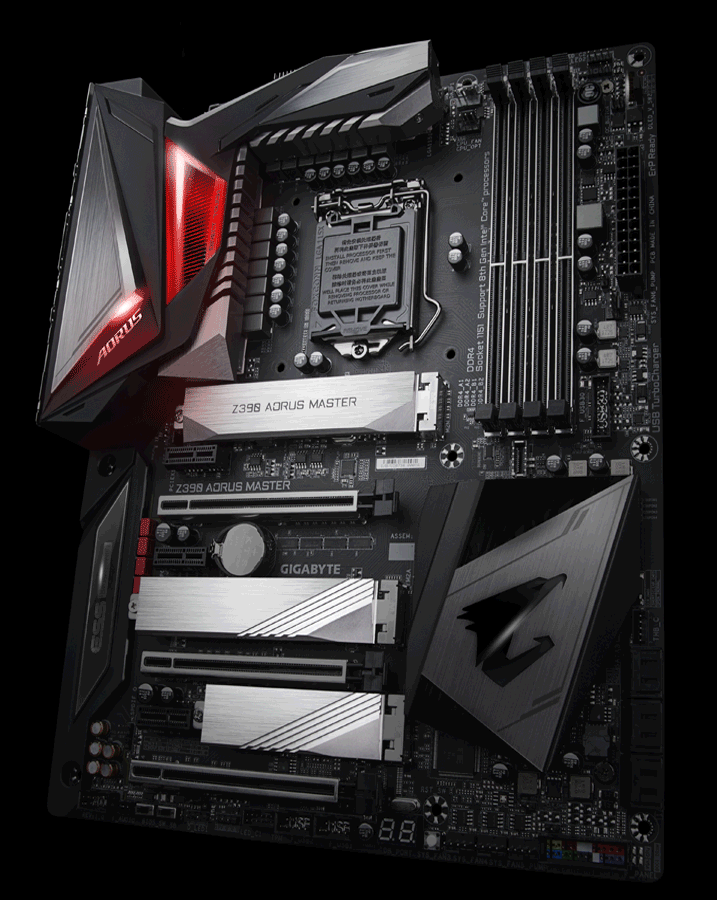













This thread is still under construction. Please be patient and thank you for understanding.
This thread is for the Z390 Aorus motherboard owners or future owners. We would like to be able to make this the go to for info, help, complaints, and suggestions about the board.
Lets make this thread helpful and respectful for all users. I will post a quick rundown of the board and links below for more information.
Gigabyte OC Guide https://redirect.viglink.com/?forma...verclocking Community&txt=https://www.gigabyte.com/FileUpload/...le/525/946.pdf
UPDATE 11/11/18 Anyone using the Master and the metal XSPC backplate must bend or trim at least one of the capacitor pins on the back of the board as it will short out to the backplate. CHECK YOUR BACKPLATES ON ALL BOARDS AND PLEASE POST YOUR FINDINGS. I will update the thread as people post their findings.
UPDATE 11/8/18 WATCH YOUR COOLER BACKPLATES!!!!! both my waterblock backplates make contact with Cap pins on the back of the board. had to bend them.
Z390 AORUS MASTER link https://www.gigabyte.com/Motherboard/Z390-AORUS-MASTER-rev-10#kf
Intel Z390 AORUS Master Motherboard with 12 Phases IR Digital VRM, Fins-Array Heatsink, RGB Fusion, 802.11ac Wi-Fi, Triple M.2 with Thermal Guards, ESS SABRE HIFI 9118, Intel® GbE LAN with cFosSpeed, Front & Rear USB 3.1 Gen 2 Type-C
> Supports 9th and 8th Gen Intel® Core™ Processors
> Dual Channel Non-ECC Unbuffered DDR4, 4 DIMMs
> Intel® Optane™ Memory Ready
> 12 Phases IR Digital VRM Solution with PowIRstage
> Advanced Thermal Design with Fins-Array Heatsink and Direct Touch Heatpipe
> Onboard Intel® CNVi 802.11ac 2x2 Wave 2 Wi-Fi
> 125dB SNR AMP-UP Audio with ALC1220 & High-End ESS SABRE 9118 DAC with WIMA audio capacitors
> USB TurboCharger for Mobile Device Fast Charge Support
> Intel® Gigabit LAN with cFosSpeed
> RGB FUSION with Multi-Zone Addressable LED Light Show Design, Supports Addressable LED & RGB LED Strips
> Smart Fan 5 features Multiple Temperature Sensors and Hybrid Fan Headers with FAN STOP
> Front USB 3.1 Gen 2 Type-C™ Header
> Triple Ultra-Fast NVMe PCIe Gen3 x4 M.2 with Triple Thermal Guard
> USB DAC-UP 2 with Adjustable Voltage
> CEC 2019 Ready, Save Power With a Simple Click
REVIEWS
https://docs.google.com/spreadsheets/d/1gmWQmnEaVZkQbuvjLiL3JaGwOzwCAoVlb16g7gmfSb4/edit#gid=0
PCIe diagram: https://drive.google.com/open?id=1iN...QbnqQaDoJDmUme
OC Guide: https://drive.google.com/file/d/1dpI...ew?usp=sharing
Temp Sensor info








